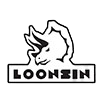Keď ide o vykonávanie ťažkej práce s našimi veľkými strojmi, sú vývodové šipky a gumy extrémne dôležitou súčasťou. Tieto komponenty umožňujú pohyb a rotáciu veľkej lopatke stroja, ktorej sa hovorí krhák. Predstavte si, ako by bolo zvedať hlínu alebo kameňe s krhákonom, ktorý sa nemôže pohybovať! No, ak nie sú vývodové šipky a guma v dobrom stave, krhák nemôže plniť svoju funkciu, a ak krhák nefunguje správne, tak ani stroj nebude pracovať správne.
Košové špehy a valce je potrebné nahrať, keď sú staré, opotriečené alebo poškodené. Tento proces ich nahrádzania zabezpečuje, že operátor, používateľ stroja, je v bezpečí. Nepravильно funkcionujúci alebo nevhodne servisovaný čtyrtonný koš môže spôsobiť nehody alebo nevyhnutné oneskorenia pri najatí. Ak je zariadenie správne udržiavané, bude pracovať hladko a správne.
Ako vybrať správne košové špehy a valce
Na trhu je k dispozícii niekoľko typov košových špehov a valcov. Môžu slúžiť dlho, ale musia byť správne pre váš stroj. Existujú určité faktory, ktoré treba pečlivo zvážiť pri výbere košových špehov a valcov. Najprv sa zamyslite nad ich hrúbkou. Pre väčšiu hmotnosť sú vyžadované hrubejšie košové špehy a valce, ktoré sú silnejšie. Ale pamätajte, čo sú časti hrubejšie, môžu tiež zvýšiť hmotnosť stroja a to môže ovplyvniť jeho fungovanie.
Druhé, uistite sa, že viecie, z akého materiálu sú ŠPEHY A VALCE NAPOČÍTANÉ pre poľnohospodársky stroj sú vyrobené z. Typické materiály sú bronza a ocel, a každý z nich prináša ďalšie výhody. Ocel, napríklad, je silná, a bronza je menejáchna na rezivanie. Ďalším kľúčovým faktorom je veľkosť častí, alebo lepšie povedané, priemer. Aj keď časti pasujú správne, nefungujú tak, ako by mali. Ak si uvidíte čas potrebný na výber správneho typu valcových šipov a rúr, vaše stroje budú fungovať lepšie a dlhšie.
P.S. Ako udržiavať valcové šipy a rúry
Životnosť valcových šipov a rúr závisí veľmi od ich údržby a starostlivosti. Problémy sa dajú predchádzať pravidelnou údržbou. Medzi ne patrí potreba pravidelne tiahnuť valcové šipy a rúry. To znamená naniesenie niektorého mastného lubrikantu alebo oleja na nich, aby sa môžu hladko pohybovať a vyhovieť sa treniu. A s trením prichádza možnosť opotrieť, čo robí mimoriadne dôležitým, aby boli udržiavané namastené.
Niektorí ľudia tvrdia, že lubrikácia je dôležitá, ale tiež by ste mali pravidelne skúmať stav závorových pinov a vložiek. Skontrolujte, či nie sú viditeľné žiadne trhliny alebo koroziu. Ak tieto problémy uvidíte, je čas ich zmeniť. Skontrolujte nätie šroubov a matiek, ktoré držia výkopová lopatová špica a vložky. Pribudnuté šrouby znamenajú väčšie problémy, preto všetko musí byť pevne.
Ako nahraďovať závorové piny a vložky; Krokové pokyny
Takže keď budete musieť nahraziť závorové piny a vložky, použite tento jednoduchý príručku.
Krok 1: Najprv bezpečnosť. Uistite sa, že je stroj vypnutý počas celého času. To je veľmi dôležité pre vašu bezpečnosť! Spustite závoru úplne na zem.
Krok 2: Vyjmite staré piny a vložky závorovej závory. Môžete závoru trochu pozdvihnúť pomocou domčeka a podporiť ju stojanom. Toto zabezpečí, aby všetko zostalo konzistentné počas práce. Potom sa používa špeciálny nástroj nazvaný nástroj na odstraňovanie pinov, aby sa pin odstránil zo závorovej závory.
Krok 3: Po odstránení starých častí skontrolujte stav nových závorových šipov a guličiek. Pečlivo ich prehliadajte na poškodenie, trhliny alebo rdzu. Mali by ste využiť túto príležitosť na vyčistenie akéhokoľvek bláta, škriatku alebo iného znečistenia, ktoré blokuje otvory v závore.
Krok 4: Nainštalujte šipy a guličky pre novú závoru. Uistite sa, že sú správne zarovnané a pevne pripnuté. To znamená, že ich máte utiahnuť momentovou klavcou tak, aby boli dosiahnute rekomendované hodnoty utiahnutia podľa výrobcových noriem.
Krok 5: Keď už ste nahradili novejšími časťami, uistite sa, že ich natočíte. Natrite olejem alebo tukom každý spoj. To im pomôže plynule sa hybáť a chráni ich pred eroziou spôsobenou trením.
Krok 6: Teraz by ste mali otestovať závoru a mala sa ľahko hybáť. Nechajte ju voľne sa hybáť, nezakotvať nič. Overenie jej funkčnosti môže byť kritickým krokom.
Závorové šipy a guličky sú nevyhnutnou súčasťou veľkých strojov. Umožňujú závorám vykonávať ťažké úlohy, ako je presun a otáčanie. Výber vhodných výkopová lopatka pin , udržiavanie ich v použiteľnom stave a majúci správny postup pre náhradu je základné pre bezpečnosť aj pre správne fungovanie stroja. Použite tento jednoduchý príručku, aby ste vám pomohli udržiavať vaše zariadenie pre dlhšiu životnosť.

 EN
EN
 AR
AR
 BG
BG
 HR
HR
 CS
CS
 DA
DA
 NL
NL
 FI
FI
 FR
FR
 DE
DE
 EL
EL
 HI
HI
 IT
IT
 JA
JA
 KO
KO
 PL
PL
 PT
PT
 RO
RO
 ES
ES
 SV
SV
 TL
TL
 ID
ID
 SR
SR
 SK
SK
 SL
SL
 UK
UK
 VI
VI
 HU
HU
 TH
TH
 TR
TR
 FA
FA
 MS
MS
 BN
BN
 KM
KM
 LO
LO
 LA
LA
 NE
NE
 MY
MY
 SU
SU
 UZ
UZ

